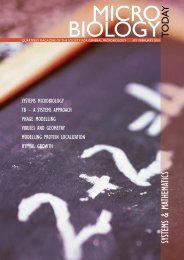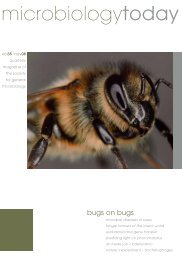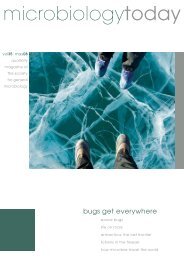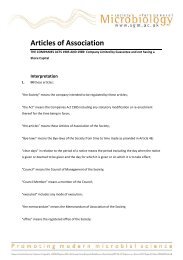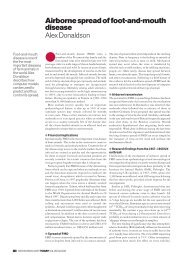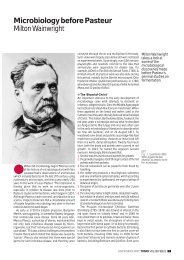final report - ARCHIVE: Defra
final report - ARCHIVE: Defra
final report - ARCHIVE: Defra
You also want an ePaper? Increase the reach of your titles
YUMPU automatically turns print PDFs into web optimized ePapers that Google loves.
Diagnosis<br />
2.3.7 The mixture of antigens used in the test combined with the pattern of cytokines released provides<br />
numerous opportunities to establish relationships between the pathological stage of the disease and<br />
the host’s reaction. In particular, it would be valuable to establish the capacity of such tests to recognize<br />
animals that have been exposed without established infection (self-cure), latently infected, infected<br />
with progressive disease and those that are currently both diseased and infectious. Most importantly,<br />
as is already the case in human TB, it will be possible to differentiate immunized animals from infected<br />
animals by using appropriate variants of these tests with so-called DIVA (Differentiated from Vaccinated)<br />
antigen mixes (<strong>Defra</strong> project SE3222).<br />
2.3.8 We strongly advise maintenance of an active programme of research and development concerned<br />
with these evoked cytokine tests. The possibility that responses might be detectable from the cell<br />
populations present in milk could be worth exploration.<br />
2.3.9 Biomarker studies: There has been much recent interest in the use of biomarkers for the diagnosis of<br />
specific disease states (Hodgetts et al., 2007; Lalvani et al., 2008; Perrin et al., 2007). These have been<br />
particularly fruitful in cancer diagnosis. In such studies, detection of a specific molecule or combination<br />
thereof is shown to have a certain sensitivity and specificity for a particular diagnosis. In addition to<br />
the volatile organic compound studies undertaken at the Veterinary Laboratories Agency (VLA), we<br />
understand that mass spectrometry studies have been undertaken on various secretions from infected<br />
animals (<strong>Defra</strong> project SE3221; Pavlou et al., 2004; Phillips et al., 2007). We consider these studies<br />
useful but would not advise extension beyond the limits presently planned unless new developments<br />
provide a breakthrough in the robustness of a particular approach.<br />
2.4 Diagnosis of bTB in badgers<br />
2.4.1 The pathology and natural history of TB in badgers has many features that are distinct from the disease<br />
in bovines. Diagnosis is rendered difficult and costly due to the need to trap and anaesthetize animals<br />
prior to testing.<br />
2.4.2 Diagnosis is currently based around two antibody tests, the Brock ELISA test and the Stat-Pak lateral<br />
immunodiffusion test, and the detection of live bacilli by culture. Although the antibody tests have low<br />
sensitivity, their specificity appears acceptable and they provide the mainstay of detecting subclinical<br />
TB in badgers (Chambers et al., 2005, 2008).<br />
2.4.3 A g-IFN test has recently been established with both mRNA and ELISA readouts. As expected, these<br />
tests show greater sensitivity than the antibody tests. Specificity is achieved by a comparative analysis<br />
of the responses to bovine and avian tuberculin (Dalley et al., 2008; Sawyer et al., 2007). These tests<br />
are more expensive than the antibody tests.<br />
2.4.4 At present, there is no simple convenient and validated test to assess the infective status of a badger<br />
population associated with a particular location. As with bovines and humans, point of contact testing<br />
applicable to un-anaesthetized animals would be extremely valuable but does not appear achievable in<br />
the short or medium-term.<br />
14



